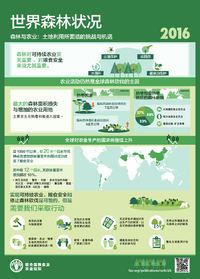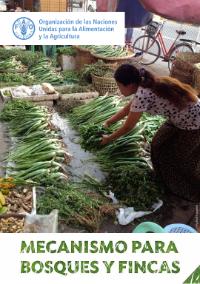El estado de los bosques del mundo 2016. Infografía
Los bosques y los árboles respaldan la agricultura sostenible. Estabilizan los suelos y el clima, regulan los flujos de agua, ofrecen sombra y refugio y proporcionan un hábitat a los polinizadores y los depredadores naturales de plagas agrícolas. Asimismo, contribuyen a la seguridad alimentaria de cientos de millones de personas, para quienes constituyen fuentes importantes de alimentos, energía e ingresos. Sin embargo, la agricultura sigue siendo el principal factor de la deforestación a nivel mundial y, a menudo, las políticas agrícolas, forestales y de tierras no casan.





